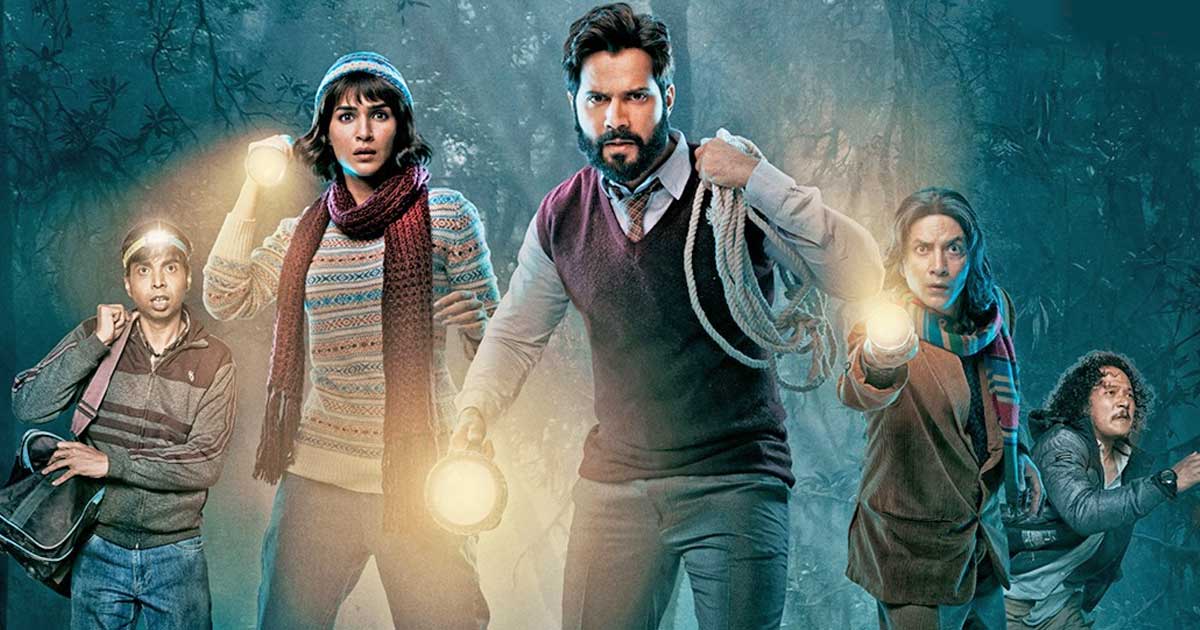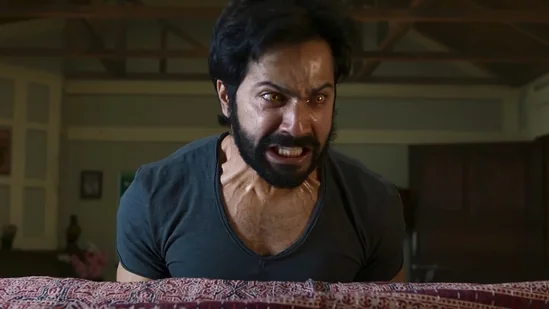
‘Bhediya’ review: No hour of the werewolf — A roar that’s more of a whimper

Director Amar Kaushik seems to want to eat his cake, and have it too. Remember how he offered his two cents on Indian society’s obsession with fair skin in his last film Bala (2019): by casting a (relatively) fair-skinned Bhumi Pednekar, whose dusky complexion is exaggerated using not very subtle make-up? It’s hardly surprising that the move was widely criticised.
But Kaushik is doing it again in his latest release, Bhediya. He sets the Varun Dhawan-starrer in Arunachal Pradesh’s “Ziro” — and while he wants to address mainland India’s apparent racism against the North-East, he doesn’t hesitate from letting a character repeatedly call a local Arunachali character Jomin (Paalin Kabak) as ‘Chowmein’ and talks to him with the prefix “tum log.”
Surface engagement
It doesn’t take a supremely intelligent person to see through what Kaushik is trying to do here: he wants to indulge mainland India’s casual racism (a significant chunk of his audience) for easy school-boy laughs, but he’s also made sure to give Jomin that one scene of outrage against such behaviour, just in case someone (like this writer) labels the film as ‘racist’.
At some point, we’ve all prepared for an exam by doing the bare minimum, and this appears to be Kaushik’s version of bare minimum social engagement with an issue he wants to offer his ‘expert’ take on without compromising on the ‘entertainment’ value of his film. Spoiler alert: It’s dishonest, lazy and one can’t help but yawn at the film’s overeagerness to make everyone laugh.
Also read: Movie magic to crime thriller: Chhello Show, Chup, Kantara on OTT
Bhaskar (Varun Dhawan) is a small-time contractor looking to make it big by delivering a project in Arunachal Pradesh. The project entails building easily accessible roads to Ziro valley — which will mean significant deforestation in the area. Bhaskar’s job is to convince the tribals to sign away their land to the company — with the usual promises of shopping malls, recreation centres, high-rise apartments.

It’s nothing we haven’t heard before. In a rare genuinely funny joke in the film, Deepak Dobriyal’s Panda — a government officer overlooking the project — dryly says “apna zameen de do, varna government le lega.” (hand over your lands or the government will take it.) The jungles in the region are governed by the legend of a shape-shifting wolf called Vishaanu, the protector of the forest, one the corrupt contractors and bureaucrats will have to overcome.
Bhediya wants to convince you that it’s a “high concept” movie, given its not-cringeworthy VFX work. But looking at the film’s familiar premise, one might get nostalgic about ‘90s Bollywood films like Anil Sharma’s Maharaja (1998) — where Govinda plays a cat-eyed leader of the jungle, who can communicate with the fauna provided he stares long enough. Or Safari (1999) — the Bollywood ripoff of the Australian phenomenon, Crocodile Dundee (1986), starring Sanjay Dutt and Juhi Chawla.
It’s jarring to note how the ecological awareness in Hindi films has hardly evolved after more than two decades. Bollywood characters talk about preservation of the environment with the naiveté of someone who still hasn’t heard about climate change yet.
Also read: ‘Chhello Show’ director Pan Nalin’s quest to ‘become’ a film
After having a portion of his posterior chewed off by the mythical Vishaanu, Bhaskar starts showing signs of having become a werewolf himself. The only problem? He doesn’t remember his actions after his transformation. So, whoever he bribes for the road construction project in the morning, he also mauls by night. We know where this is headed, and there are a few surprises along the way.
Dhawan, who has made a career out of referencing Govinda/Salman Khan performances while taking off his shirt, does just that. There’s something to be said about Dhawan’s eagerness in his last few films, where one almost imagines him popping out of the screen to tell the audience to like him.
Sanon has muted presence
Abhishek Banerjee, continuing in his Stree mode, is not as effective as he used to be. Kriti Sanon’s Anika, a veterinarian in a bad wig, shows up for an inconsistent love track between her and Bhaskar, and is underutilised as any of the ‘heroines’ in any mainstream film in the last few years. Sanon’s muted presence throughout the film is justified with a ‘twist’ in the end — which might as well be called an ‘apologist’s gotcha moment’ — where the makers try to fool audiences by hinting how the leading lady’s disposability to film’s central events is by design.
Also read: Reflections on R Balki’s Chup: Why it’s easy to fall in love with it
It’s already being discussed widely on social media, so we might as well talk about the extended Dinesh Vijan horror-comedy universe that is being attempted. The characters of Stree showing up at the end of Bhediya reeks of desperation. It’s a soft signal from a producer’s lack of conviction in the individuality of his latest film, so he latches it to a successful project from four years ago.
While Stree had some surprising deftness to it (thanks majorly to Raj and DK’s bold, subversive choices) there’s simply nothing in Niren Bhatt’s script that is particularly memorable. The steady Marvel-isation of Bollywood must continue. As Varun Dhawan’s character says in the film at some point — the only ‘hariyali’ (greenery) that counts is ‘hari patti’ (money).


